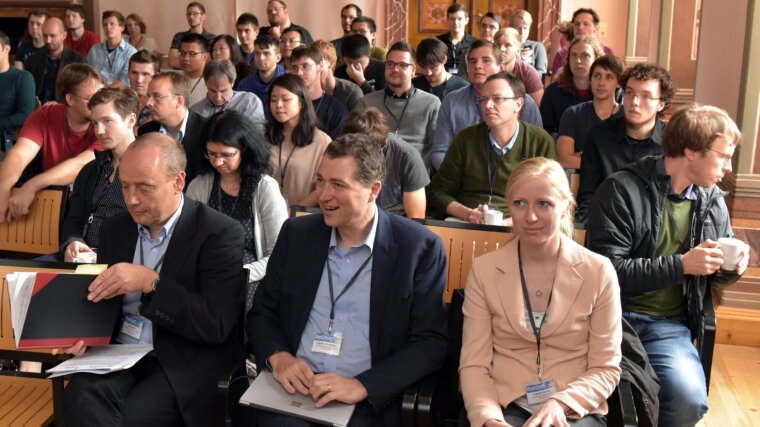
Dragomir Neshev, Queen Elizabeth II Fellow, Nonlinear Physics Centre and Centre for Ultrahigh-bandwidth Devices for Optical Systems (CUDOS), Research School of Physics and Engineering, Australian National University, is visiting the Faculty of Physics and Astronomy as ASP Visiting Professor from September until October 2013. During his stay he will give a series of lectures.
Dragomir Neshev is an Associate Professor and Queen Elizabeth II fellow at the Australian National University. He holds a Ph.D. degree in physics from Sofia University, Bulgaria, 1999. He has worked in the field of nonlinear optics at several research centres around the world and since 2002 he is with the Australian National University (ANU). He is the project leader on Functional Metamaterials at the Centre of Excellence for Ultrahigh-bandwidth Devices for Optical Systems (CUDOS) and leads the Experimental Photonics group at the Nonlinear Physics Centre, ANU. His activities span over several branches of optics, including nonlinear periodic structures, singular optics, plasmonics, and photonic metamaterials. He is an editor with Scientific Reports, International Journal of Optics, and Advances in Applied Physics.
Website of Dragomir NeshevExternal link
Lecture 1: Light Emission in Nanoscale Environments
Time: September 23, 2013, 13:30
Place: IAP seminar room Albert-Einstein-Strasse 15, 07745 Jena
Monitoring of emission of single molecules or nanoparticles has proven to be an important tool for examining and sensing of various biological processes. However, with the advances of the ideas of fluorescent bio-markers it becomes increasingly important to develop techniques for control and detection of single fluorophores detection. This lecture will introduce some of the basic concepts of coupling of emitters to nanoscale structures. In particular, we will focus on the advantages of interaction of fluorophores with plasmonic nanostructures, such as metal nanoparticles and optical antennas. We will then overview some recent advanced concepts of nanoscale manipulation of the intensity, spectrum, lifetime, polarization, and quantum properties of the emitter's radiation.
Lecture 2: Topological Insulators, Graphene and their Applications in Optics
Time: September 26, 2013, 10:30
Place: IAP seminar room Albert-Einstein-Strasse 15, 07745 Jena
The field of topological insulators has emerged as a new important concept in solid state physics. This two part lecture will introduce some of the fundamental principles of topological insulators and will draw on their analogy with the electron transport in graphene structures. We will then review some of the recent ideas where such electronic properties have been applied in photonics.